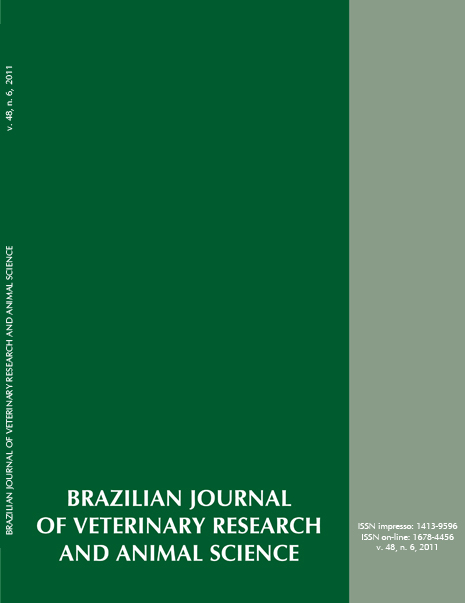Clinical and radiographics results of locking plates in 13 cases
DOI:
https://doi.org/10.11606/S1413-95962011000600010Keywords:
Locking plate, Dogs, Osteotomy, OsteosynthesisAbstract
Locking plate is a new internal fixation system where the plate features has double holes, one smooth for compression and other threaded for screw fixing that attaches the plate. It leads to greater stability to the fracture being possible to associate neutral and compressive screws. Traditional screws compress the plate to the bone, in the locking plates there are no such strength and the fit of the screw head to the plate results in less damage to the vascular periosteal support. Thirteen dogs with various orthopedic disorders were treated surgically by locking plate with satisfactory results. The locking plate can be used in veterinary medicine, however, it is a technique that requires care and preoperative planning, especially in the order of applying different types of screws. It is expensive, but provides rigid stability of the fracture site and minimizes the likelihood premature loss of the screw and bone interface, reducing the possibility of instability and early loosening of the implant.Downloads
Download data is not yet available.
Downloads
Published
2011-12-01
Issue
Section
UNDEFINIED
License
The journal content is authorized under the Creative Commons BY-NC-SA license (summary of the license: https://
How to Cite
1.
Ferrigno CRA, Cunha O da, Caquias DFI, Ito KC, Nina MID, Mariani TC, et al. Clinical and radiographics results of locking plates in 13 cases. Braz. J. Vet. Res. Anim. Sci. [Internet]. 2011 Dec. 1 [cited 2024 Apr. 19];48(6):512-8. Available from: https://revistas.usp.br/bjvras/article/view/34359





